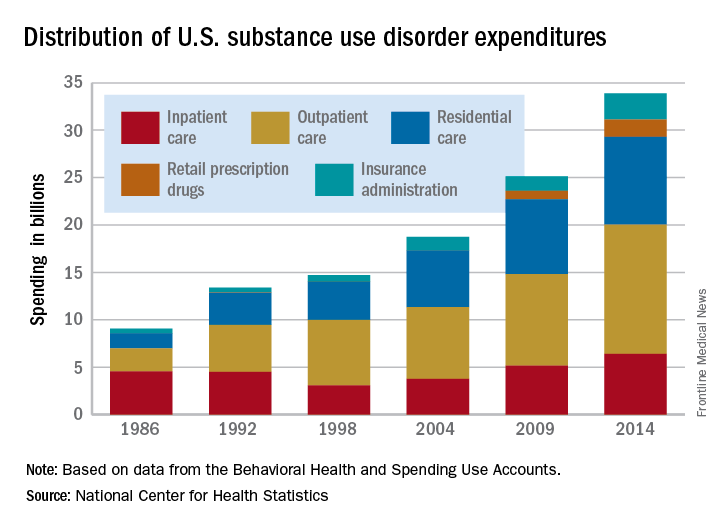Total spending on the treatment of substance use disorder reached $34 billion in 2014, with outpatient care taking the largest share, according to the National Center for Health Statistics.
That $34 billion represents an increase of 273% from the $9.1 billion spent in 1986 and a considerable shift in the distribution of spending over the last 30 years. In 1986, the largest share of spending – 50%, or $4.6 billion – for substance use disorder went toward inpatient care and only $2.4 billion (27%) was used for outpatient care. In 2014, outpatient treatment of substance use disorder had a 40% share ($13.6 billion) of all spending, and inpatient care was down to 19% ($6.4 billion), the NCHS reported in “Health, United States, 2016.”
The second-largest segment of expenditures in 2014 went to residential care at 27%, which works out to almost $9.3 billion, followed by inpatient care, insurance administration at 8% ($2.8 billion), and retail prescription drugs at 5% ($1.8 billion). In 2004 and earlier, use of retail prescription drugs for the treatment of substance use disorder was almost nonexistent, totaling only $11 million in 2004 and $5 million in 1998. In 2009, however, spending on retail prescription drugs was $890 million, as shown by data from the Substance Abuse and Mental Health Services Administration’s Behavioral Health and Spending Use Accounts.Since methadone is not considered a retail drug by SAMHSA, it is classified under specialty substance use disorder treatment centers, which are included in the estimate for outpatient care, the NCHS noted.


